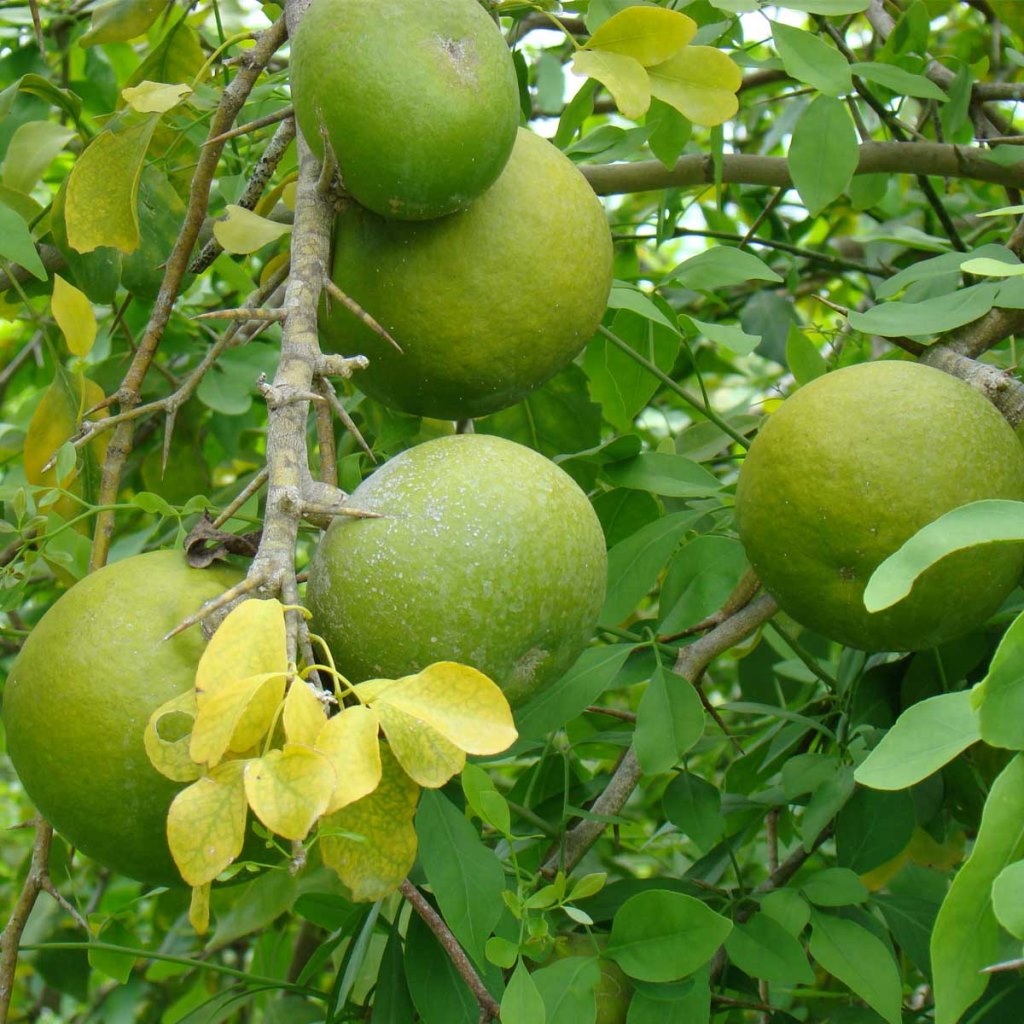Aegle marmelos Correa
Family
Rutaceae
Origin
India & South Asia
Description
The bael fruit tree is slow-growing, of medium size, up to 40 or 50 ft (12-15 m) tall with short trunk, thick, soft, flaking bark, and spreading, sometimes spiny branches, the lower ones drooping. This deciduous tree with trifoliate aromatic leaves (bilwa patra) is traditionally used in religious rituals and is a sacred offering to Lord Shiva .
The deciduous, alternate leaves, borne singly or in 2's or 3's, are composed of 3 to 5 oval, pointed, shallowly toothed leaflets, 1 1/2 to 4 in (4-10 cm) long, 3/4 to 2 in (2-5 cm) wide, the terminal one with a long petiole. New foliage is glossy and pinkish-maroon. .
Fragrant flowers, in clusters of 4 to 7 along the young branchlets, have 4 recurved, fleshy petals, green outside, yellowish inside, and 50 or more greenish-yellow stamens.
Fruits form on the trees in , although they do not ripen until early winter.The fruit, round, pyriform, oval, or oblong, 2 to 8 in (5-20 cm) in diameter, may have a thin, hard, woody shell or a more or less soft rind, gray-green until the fruit is fully ripe, when it turns yellowish.
Environment
The bael fruit tree is a subtropical species. It requires a climate where the summer is hot and winter is mild and a well-drained sandy, loam soil is ideal. The plant survives a wide temperature range from 20-120F.
Bael plants are most susceptible to water-logging and care should be taken to avoid such a condition. Suckers appearing from the roots should be removed periodically.
Landscape Use
Good for a Garden, Farm & Bonsai




















